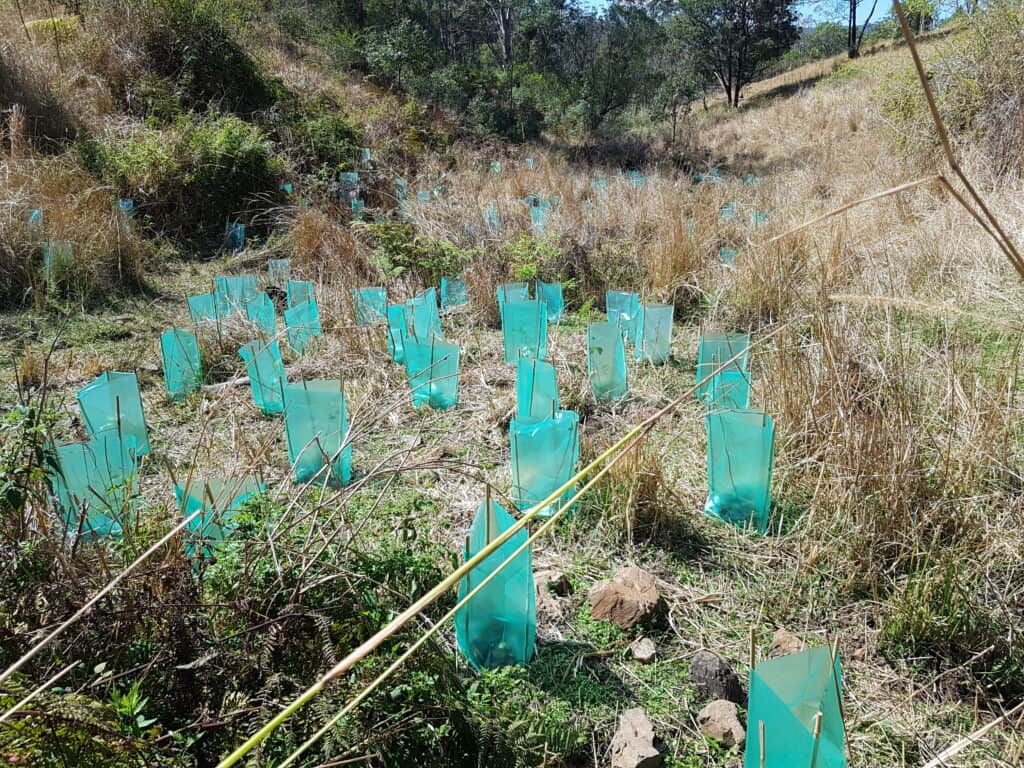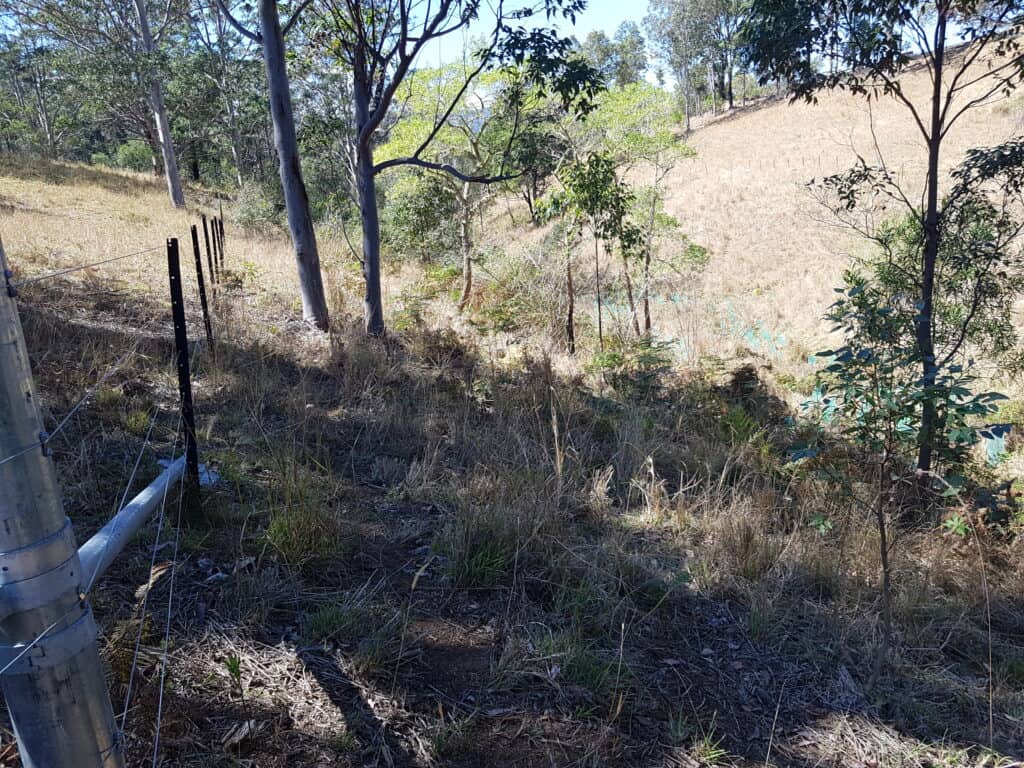

Local Birdwood landholder is restoring and protecting a tributary of the Forbes River as a part of our biodiversity hotspots project! The project prevents stock from accessing the river, helps prevent erosion, creates a riparian wildlife corridor, increases on-farm biodiversity and improves stock management. Nearly 700 metres of fencing has been installed and thousands of trees, shrubs and grasses. Local seed was collected, propagated and cared for by the landholder in preparation of planting the site. It won’t take long to see the benefits of this project!
This is one of 29 biodiversity projects that aim to enhance biodiversity and improve water quality around farm dams, wetlands, rivers and rainforest. This project is jointly funded by the Australian and the NSW governments under the Bushfire Local Economic Recovery Fund.
Benefits of Excluding Stock from Waterways

Better Stock Management – Using a well-designed off-stream watering (trough) system and fencing infrastructure, stock is move easily moved, there are fewer stock losses on unstable banks or boggy, waterlogged soil. On off-stream watering system goes hand in hand with a rotational grazing system to effectively manage pastures. Stock have easy access to cleaner, cooler trough water. Riparian vegetation stabilises topsoil and restricting stock prevents soil being dislodged and trampled. Riparian vegetation provides shade and shelter for stock. All these benefits improve overall farm productivity.
Higher Biodiversity – Native vegetation around rivers, channels, streams, dams and wetlands provide homes for a vast array of wildlife. From insects and frogs, right through to sea eagles, owls and platypus. Higher biodiversity equals healthier more resilient landscape and farm (or property).
Reduce Erosion- Native vegetation amours the bank of a river, edge of a dam or head of a gully. The mid-section and toe of a riverbank are vulnerable during flooding. However, a combination of deep-rooted trees, mid-storey shrubs and a dense groundcover of native species help to keep the soil together during high flow.
Cleaner Water- Native vegetation acts as a filter, reducing nutrient and sediment runoff entering our waterways. Removing stock from waterway prevents tracks and pugging along the waters edge that leads to erosion and soil runoff into our waterways. Fencing also prevents faeces entering our waterway.
Cooler Water – Native vegetation armouring our waterways reduces evaporation and promotes higher moisture levels in the soil. Over hanging trees, sedges, lilies and grasses shade water. This reduces evaporation and cools water. This fresh, clean water can be used as stock water with an off-stream watering setup
Contact Us
Hastings Landcare Inc exists to supports people caring for the environment, farmland and natural resources of our local region. We support Landcare Groups, rural landholders and the wider Hastings community. Landcare is for everyone and open to everyone. Please don’t hesitate to get in contact if you would like support with riparian management.